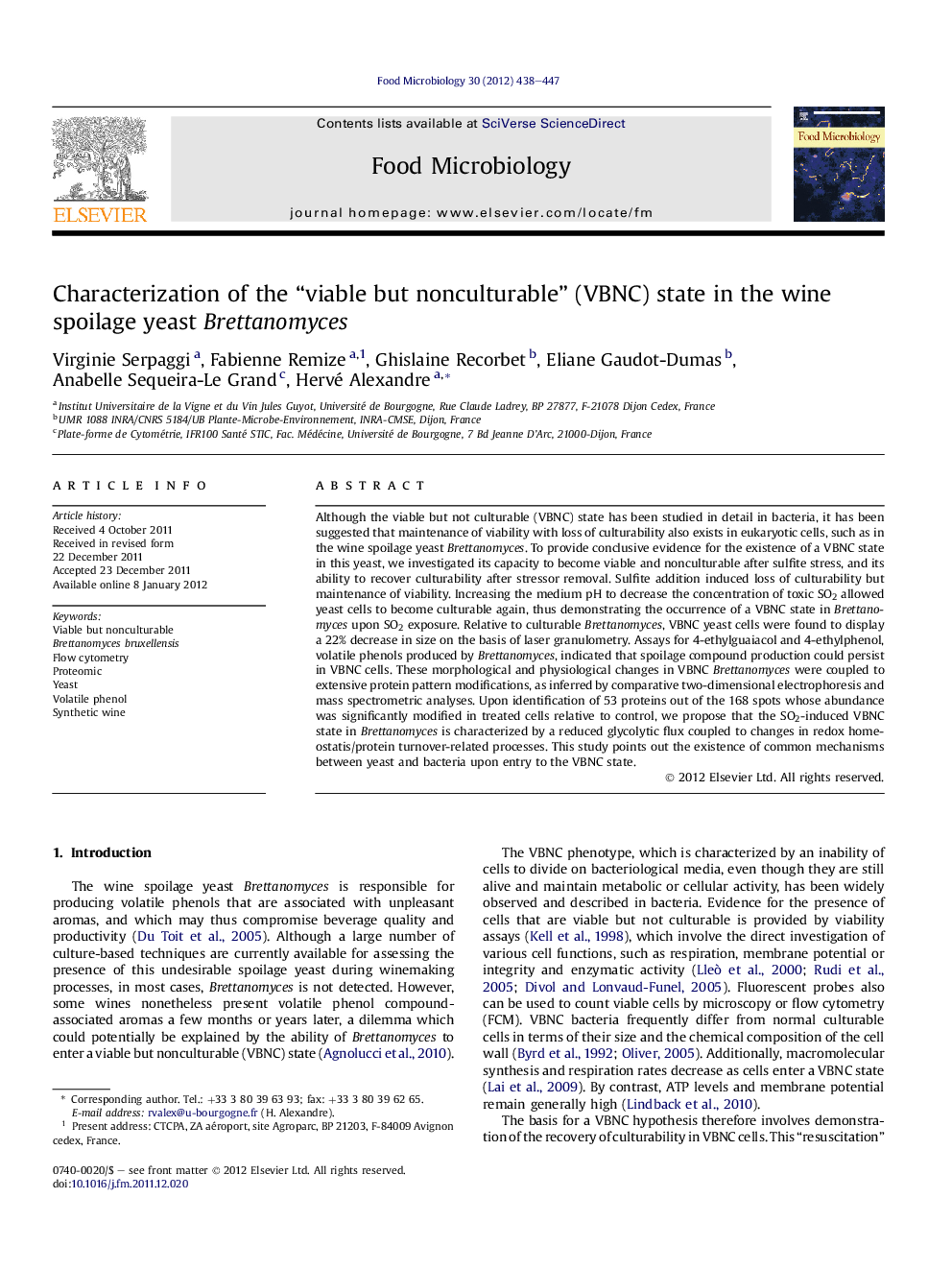| کد مقاله | کد نشریه | سال انتشار | مقاله انگلیسی | نسخه تمام متن |
|---|---|---|---|---|
| 6288921 | 1616263 | 2012 | 10 صفحه PDF | دانلود رایگان |

Although the viable but not culturable (VBNC) state has been studied in detail in bacteria, it has been suggested that maintenance of viability with loss of culturability also exists in eukaryotic cells, such as in the wine spoilage yeast Brettanomyces. To provide conclusive evidence for the existence of a VBNC state in this yeast, we investigated its capacity to become viable and nonculturable after sulfite stress, and its ability to recover culturability after stressor removal. Sulfite addition induced loss of culturability but maintenance of viability. Increasing the medium pH to decrease the concentration of toxic SO2 allowed yeast cells to become culturable again, thus demonstrating the occurrence of a VBNC state in Brettanomyces upon SO2 exposure. Relative to culturable Brettanomyces, VBNC yeast cells were found to display a 22% decrease in size on the basis of laser granulometry. Assays for 4-ethylguaiacol and 4-ethylphenol, volatile phenols produced by Brettanomyces, indicated that spoilage compound production could persist in VBNC cells. These morphological and physiological changes in VBNC Brettanomyces were coupled to extensive protein pattern modifications, as inferred by comparative two-dimensional electrophoresis and mass spectrometric analyses. Upon identification of 53 proteins out of the 168 spots whose abundance was significantly modified in treated cells relative to control, we propose that the SO2-induced VBNC state in Brettanomyces is characterized by a reduced glycolytic flux coupled to changes in redox homeostatis/protein turnover-related processes. This study points out the existence of common mechanisms between yeast and bacteria upon entry to the VBNC state.
⺠The wine yeast Brettanomyces enters a VBNC state after a sulfite stress. ⺠Sulfite removal allows yeast cell to become culturable again. ⺠In VBNC state cell size is reduced by 20%. ⺠VBNC state cells are able to produce 4-ethylphenol. ⺠VBNC cells still synthesize proteins.
Journal: Food Microbiology - Volume 30, Issue 2, June 2012, Pages 438-447